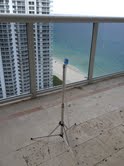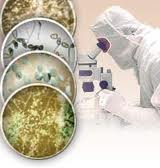- February 26, 2019
Mold Testing Info
.png)
All of our inspections include Mold Testing in order to determine if the property in question has elevated levels of mold or not, confirm the source of a problem, and to see how far a problem has spread. Unless you have had this service performed at one of your properties in the past, you probably have some questions about exactly how it works. Why is mold testing important, what type of samples do we collect, how are they taken, and how long does it take to get the results are all common questions we receive from potential customers. Another common topic that people ask about is the mold test kit and if it is any good. We will delve further into all these topics in an effort to educate you and help you determine whether or not you need this service.
Why is Mold Testing Important
.png)
If you have a feeling that your indoor air quality is suffering or worried about the possibility of indoor mold growth, mold testing must be included in your mold inspection. Many people offer Free Mold Inspections that only include visual checks of a property. That simply isn’t enough for multiple reasons. The main one being that by the time you can actually see mold growth, a problem is pretty far along. With testing we can check in places like in walls and see what is happening in the air; mold spores in the air are invisible to the naked eye so this is essential. Finding a problem before it takes its toll on building materials and/or personal belongings will save you a lot of money. Also if you are in a real estate transaction we can make sure nobody is trying to cover up existing problems by quick cleaning and painting over problems.
Not all mold is toxic, so testing to determine what species of mold if any is present will change the suggestions for removal dramatically. By spending a little bit of money on this service in the beginning, we may be able to help you avoid professional intervention altogether. At the very least we can make the area that needs work done much smaller, which will also help keep costs low. These are just a few examples of when mold testing is important. The most important thing to take note of is that you can’t tell how bad a problem is just by looking at it.
How does Mold Testing Work?
Here at MI&T, we take two different types of mold tests; air and surface. Each type serves its purpose in helping us get the information we need to let you know what does and does not need to be done at a specific property in terms of cleanup. Here some more information about each of these types of samples.
Air Samples

We collect samples of air using a vacuum pump and something call a spore trap. Basically this pumps sucks air into the trap and any mold spores in the air get trapped on a disc with a sticky pad on the inside. We start our inspection with 2 air samples to determine whether or not elevated conditions exist at a property or not. An outside sample is compared to an inside sample taken near the area of greatest concern. Additional air samples can be used to confirm a source of a problem or see how far a problem has spread. We can also gather air from behind walls with a probe, this is called an in-wall cavity sample. When analyzed, air samples show what species of mold are present and the quantity as well.
Surface Samples

Whenever possible visible growth is present, we will usually recommend a surface sample (swab) be taken. This type of testing is important because not all mold is easily airborne. For example, Stachybotrys or black toxic mold is not easily airborne unless disturbed. Whenever the possibility of this species is there, you always want to confirm or deny its presence. Surface sampling also helps us confirm a source of a problem. If we find a wall that has one species of mold on it and the general air sample has high concentrations of that same species, we can conclude that the area the surface sample was collected from is indeed the source of the problem.
Test Results
We send all samples collected into an independent lab for analysis. Results take 2-4 business days to come in but we can also guarantee next day results at an extra fee. All the data that we collect via mold testing gives us a clear picture of what is happening with your indoor environment. After the lab results come in we are able to take everything and make your report. The more concrete data/evidence we have, the more exact we can be about making recommendations for mold removal.
Mold Test Kits

During our initial conversations with potential customers, the subject of mold test kits comes up fairly often. Sometimes they let us know that they used it and it offered them no help, while others want to know the difference between what we do and what the kit does. Basically these kits will tell you that mold is present in the home. The biggest issues with this product is how inaccurate it and the lack of help its results will provide you. There is mold in every home, so just about everyone will come back with some sort of growth after they leave it out for an extended period of time. Also, if you put 5 of these right next to each other, you might get 5 different results. You then have to pay a fee to send it into a lab to get generic results. There is no one to explain what might have caused this or what you should do about it. In essence, you pay slightly less than a mold inspector but you don’t get the information you need. You can ask anyone in the mold field that knows what they’re talking about and they will tell you these kits are all but worthless.
Conclusion
Hopefully this article has helped you understand the hows and whys about mold testing and exactly what is involved in the process. There is plenty of other information about indoor mold growth all around our site, please feel free to look around. If you have specific questions that you would like answered personally, please give us a call at 855-600-6653.

